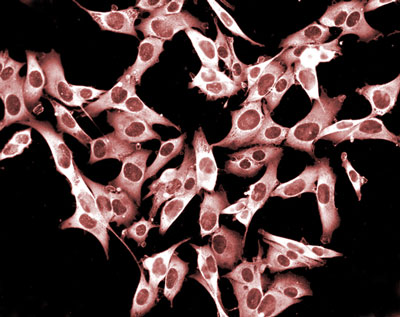Scientists discover why moles stop growing
Posted: 6 August 2015 | Victoria White
Researchers from the University of Pennsylvania have identified a major genetic factor that keeps moles in their usual non-cancerous, no-growth state…


Scientists have known for years that a mutation in the BRAF gene makes moles start growing, but until now haven’t understood why they stop.
Now, researchers from the Perelman School of Medicine at the University of Pennsylvania have identified a major genetic factor that keeps moles in their usual non-cancerous, no-growth state.
“The BRAF mutation that stimulates the initial growth of moles also stimulates the production of a tumour suppressor protein, p15, which ultimately acts as a powerful brake on further cell division,” said Todd W. Ridky MD, PhD, an assistant professor of Dermatology at Penn. “It’s this cell division that ultimately allows the transition from a normal mole into melanoma. When mole cells lose the p15 brake, cells can start dividing again and can progress into cancer.”
p15 depleted cells progressed into melanoma
For their study, Ridky and his colleagues developed a new model of human melanoma, using tissue engineering to make skin grafts containing human mole cells in which p15 was removed. When combined with other mutations known to be important for the development of melanoma, and transplanted into mice, the p15 depleted cells progressed into melanoma.
“The model tissues are medically relevant because they used the naturally occurring human mole cells in the 3-dimensional environment of living skin, which allows detailed functional studies – the field hasn’t had an experimental system like this before,” said Andrew McNeal, a research specialist in Ridky’s lab.
Both moles and melanomas originate from melanocytes within the skin. Scientists have known for more than a decade that one particular mutation is responsible for the abnormal melanocyte growth that creates the majority of both benign moles and cancerous melanomas. The mutation, in a cell-growth gene called BRAF, causes BRAF to be in an “always on” state, continuously promoting cell division.
In moles, however, cell proliferation typically stops after the cluster of melanocytes has reached the few millimetres. “Why moles stop growing, despite all that BRAF activity, has been a long-standing question in the field,” Ridky said. To answer that question, Ridky and colleagues studied mole cells isolated directly from normal benign moles removed from patients, and compared them to melanocytes isolated from normal (non-mole) skin. The mole melanocytes had 140 times more p15 than the normal skin melanocytes.
p15 may be important for holding regular moles in a benign state
Comparing cells from patient melanomas that had originated from previously benign moles, the researchers found generally high p15 levels in the mole tissue, and very low or undetectable p15 in the melanomas. This suggested that p15 is important for holding regular moles in a benign state, and that any subsequent loss of p15 would promote the transition to melanoma. Ridky and his team showed that the BRAF over-activation that drives the mole growth also causes the mole cells to secrete a signalling molecule called TGF-β, which in turn, signals back to the mole cells to make p15. These findings hinted at a possible explanation for the curious fact that most moles have to reach a diameter of at least a few millimetres before they stop growing – TGFB has to build up to a sufficient level first, and small collections of mole cells don’t lead to enough local TGFB production in the mole to stop cell division.
Ridky now plans to experiment extensively with the model to provide insights into how melanoma develops, and how it might be targeted with new therapies.
The study findings are published in Cancer Discovery.
Related conditions
Melanoma
Related organisations
Pennsylvania University



